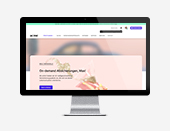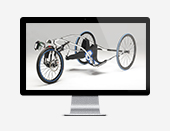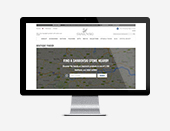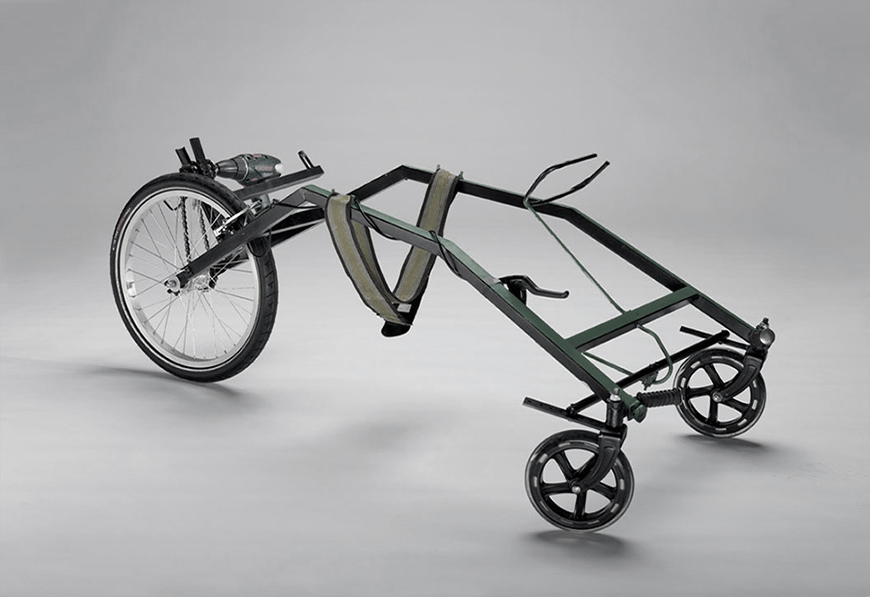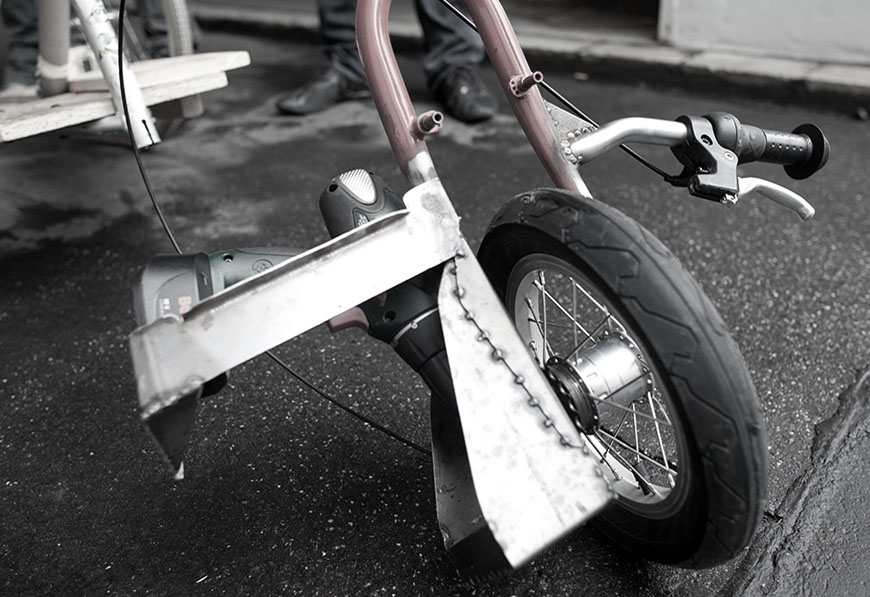During my studies at Koeln International School of Design (KISD), I collaborated on e-Drive, an academic long-term project exploring possible future forms of e-mobility.
The task was to construct a competitive vehicle designed for one driver and powered solely by an electric drill, with the aim of participating in a biennial contest between engineering and design colleges.
Type
Product Design
Client
KISD
For
Student project
Role
Conception
Vehicle production
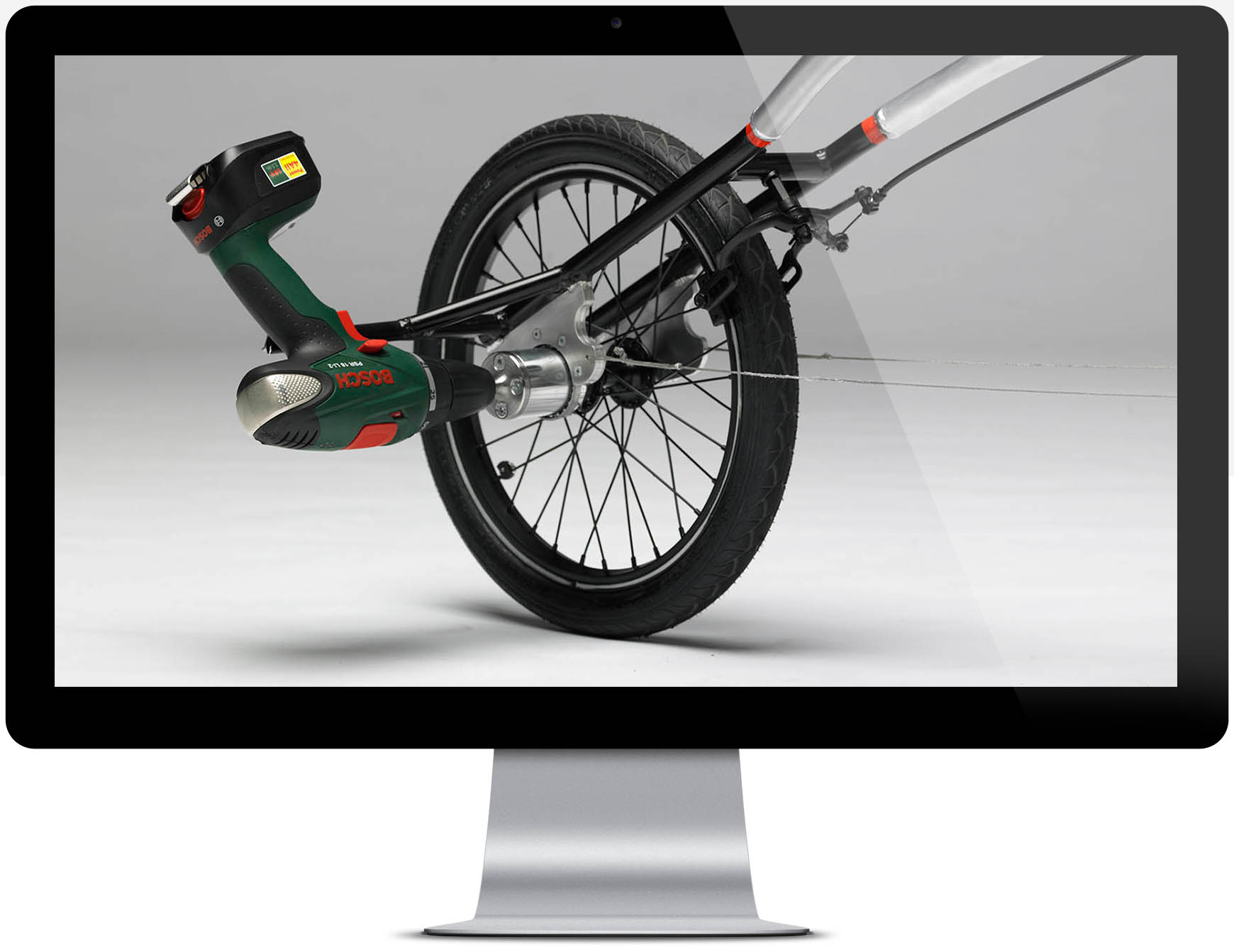

DISCOVERY
A seemingly simple set of rules: hand over an electric drill (Bosch PSR 18 Li-2, with an output equivalent to 1 HP) which must not be modified to 15 teams and let them compete against each other in a race called "Akkuschrauberrennen". While this may sound hilarious at first, building these vehicles in the span of six months involved technical challenges such as developing a propulsion concept while considering dissipation and steering characteristics, center of gravity calculation to ensure well-balanced handling, and lightweight design, to name but a few.
While being a student project, the relatively cost-intensive realization required tight management from an organizational perspective. Handling material, financial, and subsequently logistical resources, turned out to be one of the major challenges in the long run. With substantial aid from regionally and supra-regionally operating businesses, we ultimately managed to apply the gained research-based knowledge to develop two vehicle concepts that encompass complex elements from mechanical and automotive engineering.
Overcoming difficulties during product development and constantly pushing through were the key challenges of this enriching experience.
CREATION
01 RESEARCH
Being quite completely unexperienced in terms of vehicle construction and engineering principles, we had to start the project with an indispensible research phase - particularly in the fields of chassis development, propulsion, lightweight design and even safety measures that might be necessary.
After translating these insights into concrete objectives and priorities, we were able to develop a first set of simple prototypes on a 1:7 scale, which again allowed for comparison of diverse characteristics. We eventually followed up on three basic approaches that looked promising, thus entering prototype stage.
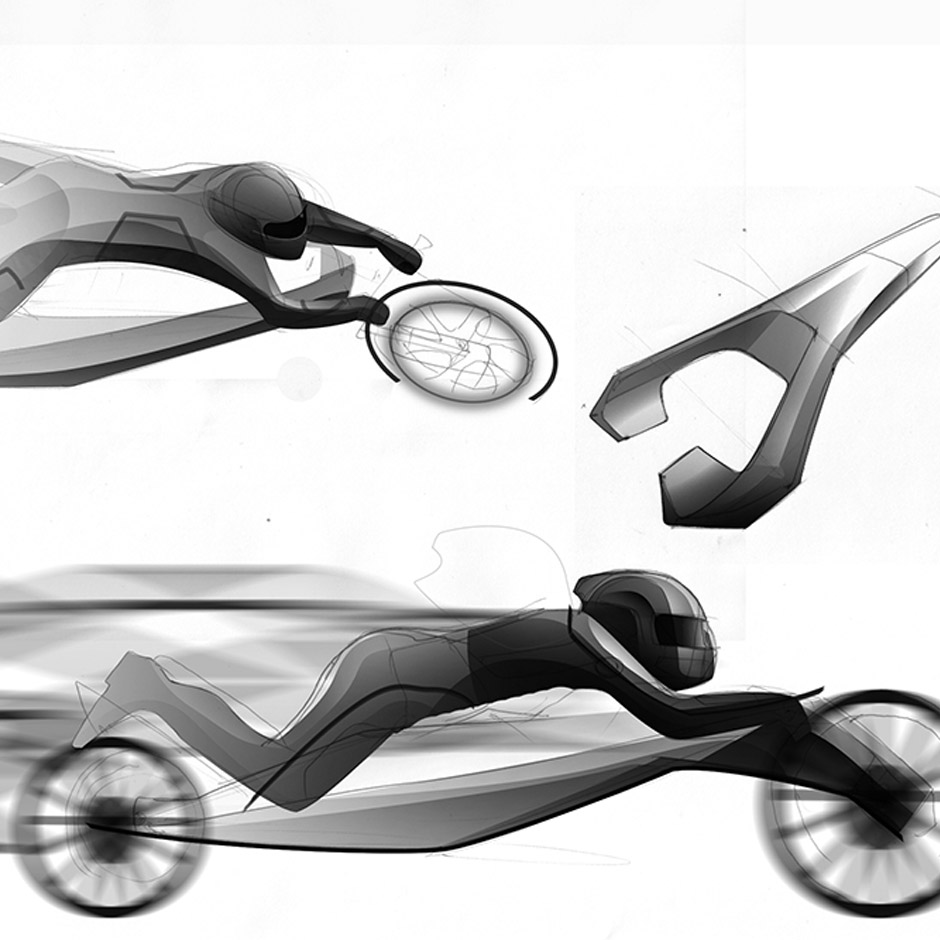

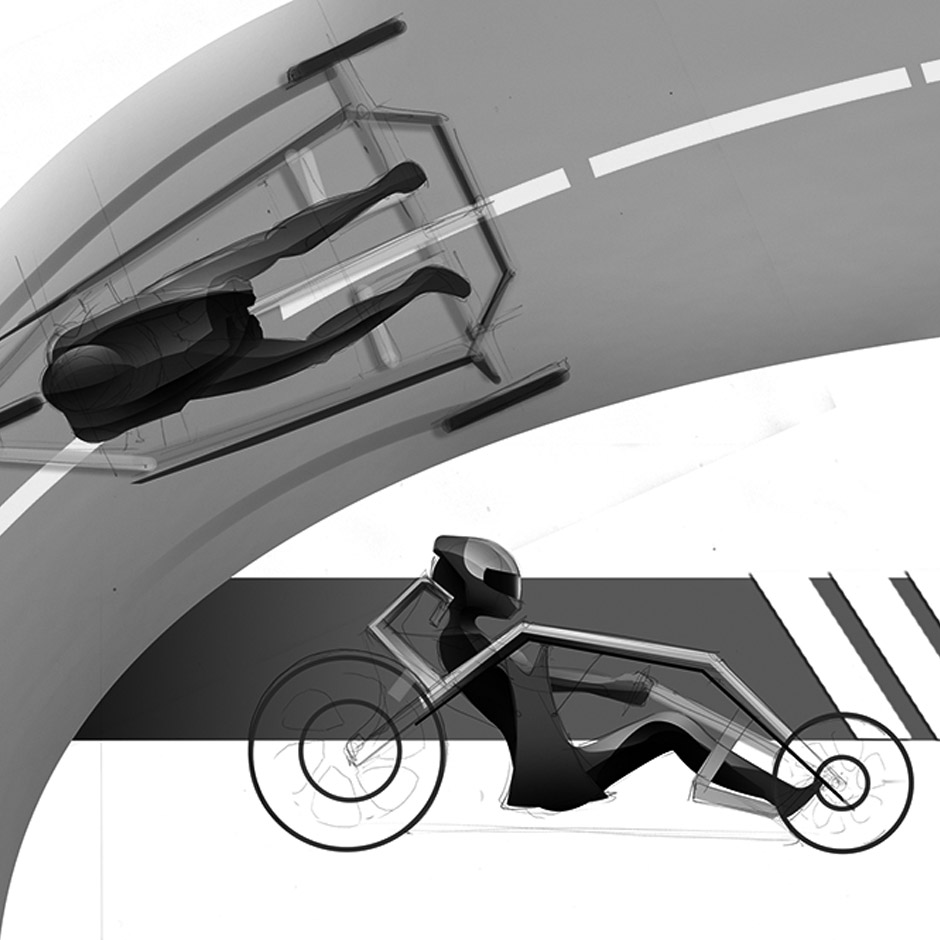

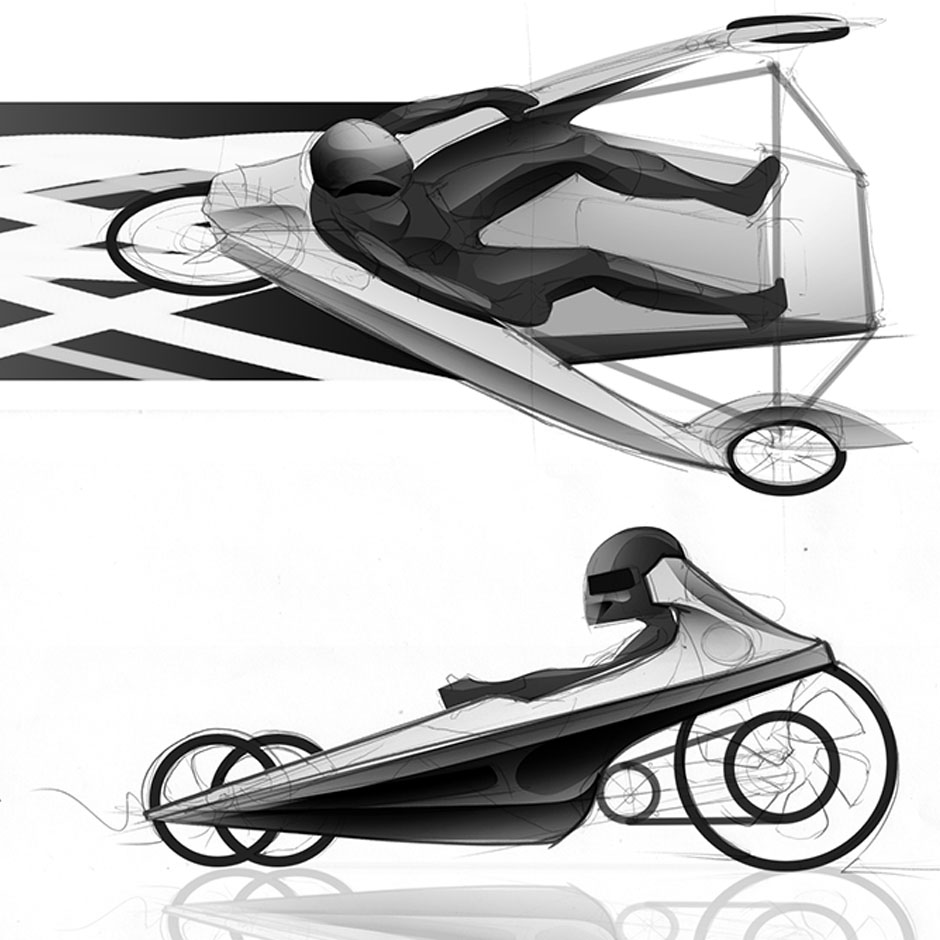

02 PROTOTYPES
Due to time pressure, we pursued a "better done than perfect" workflow and assembled three vehicles made of materials we had on hand (mostly bicycle parts) in a short time.
Organizing several elimination races on campus allowed us to compete against each other and continuously improve on transmission and cornering details while gathering experience.
Exploring approaches in a competitive way helped us to extract promising functionalities and include them in the final vehicle concepts.
After our last elimination race (watch here), we had two main vehicle concepts left, waiting to be refined for the actual competition. This involved finding sponsors willing to assist, either financially or with the corresponding know-how.
In order to reach the public effectively, we decided to document the entire process on social media asking for material sponsorship while simultaneously addressing local press and visiting trade fairs which ultimately turned out a success.
03.1 FINAL VEHICLES / E-BOW
The insights we gained during prototyping allowed us to refine the vehicle propulsion in several development stages. Replacing the rear sprockets with a bevel gear not only proved to be most effective in terms of performance limits and a 1:1 transmission on 16" wheels, but also regarding overall stability and durability. Due to tight curves on the race course, we further improved cornering by adjusting the rear wheelbase and center of gravity.
On the contrary, the laser sintered components of the front fork gave us a grave cause for concern. Being unexperienced with material cohesion and unable to conduct static calculation beforehand, led to wrong assessments concerning torsional and tensile load which the linkup between the steering head and frame simply couldn't withstand. Adding reinforcement elements and bending the frame into shape let us fix that issue on time.
Weight
6.200 g
Material
Aluminium
Laser sintered fork components
Propulsion
Bevel gear
Fastest lap time
1:19 mins
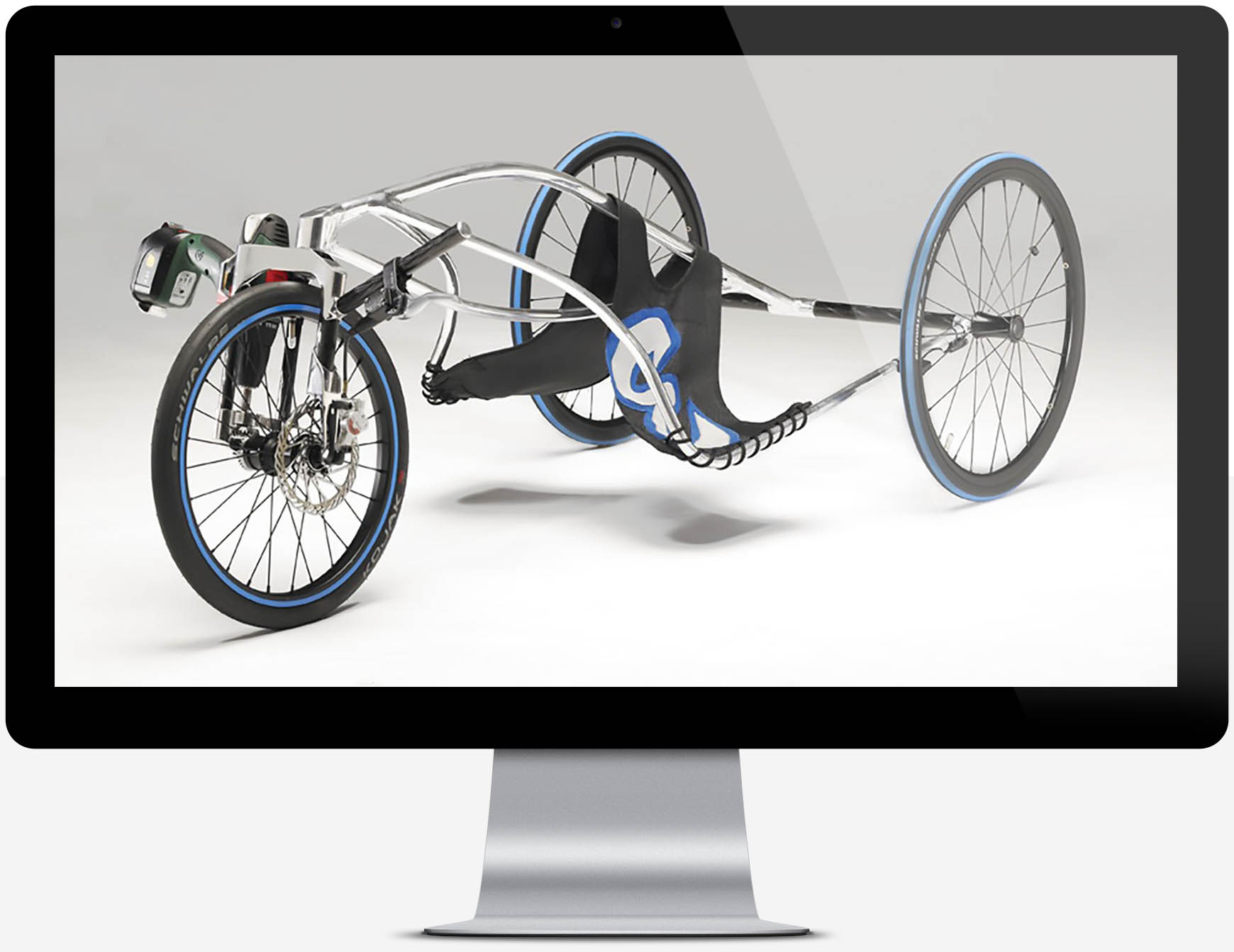

Bevel gear on laser sintered fork ensures transmission, durability and lightweight design. Developed in collaboration with the national aeronautics and space research centre.
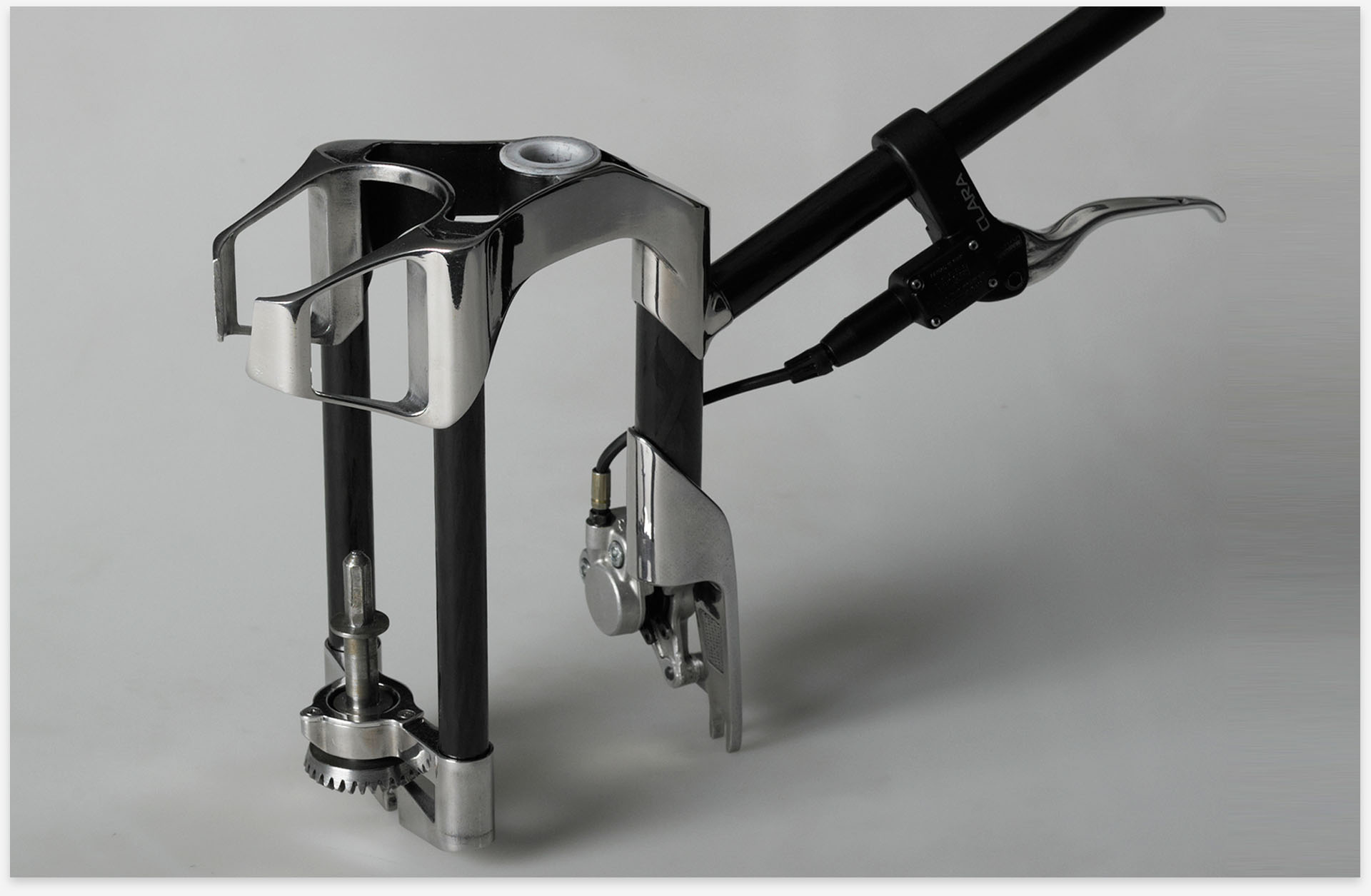

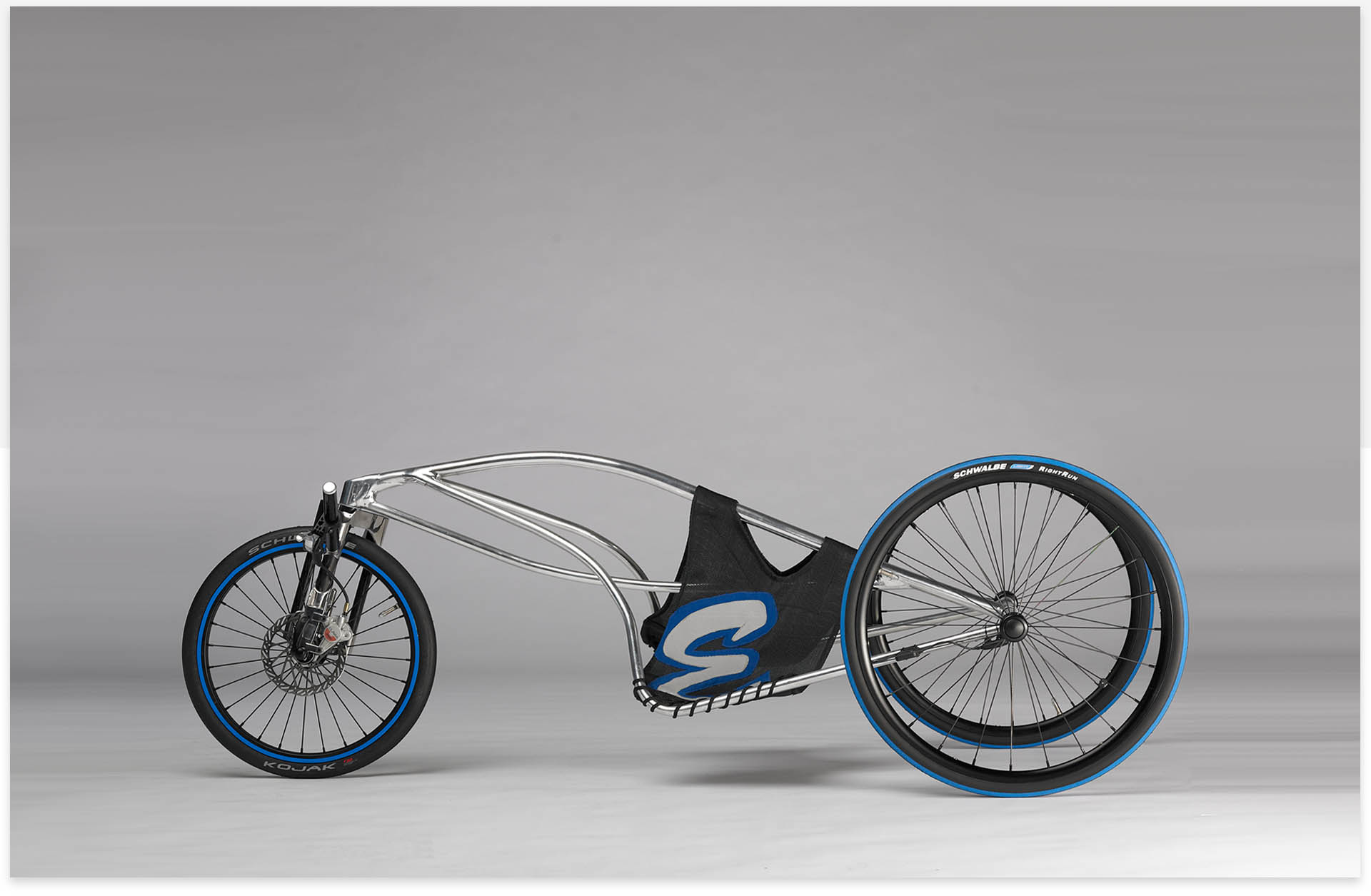

03.2 FINAL VEHICLES / BAMBOOM
In order to save as much weight as possible while minimizing friction loss, the team consequently focused on lightweight design and a preferably low center of gravity. With regards to transmission, best results were obtained by utilizing a hub drive on the rear suspension in conjunction with a throttle ensuring ideal acceleration without triggering the drill's automatic shutdown.
While the intended frame construction made of bamboo unfortunately turned out to be technically unfeasible in the time remaining, we managed to reduce the total weight by 25% through rigging high tenacity ropes for kite surfing with the frame construction itself. Utilizing this solution allowed for a lightweight, unconventional driver's seat and a low center of gravity.
Weight
7.300 g
Material
Aluminium
Propulsion
Hub drive
Speed control for precise acceleration
Fastest lap time
1:37 mins
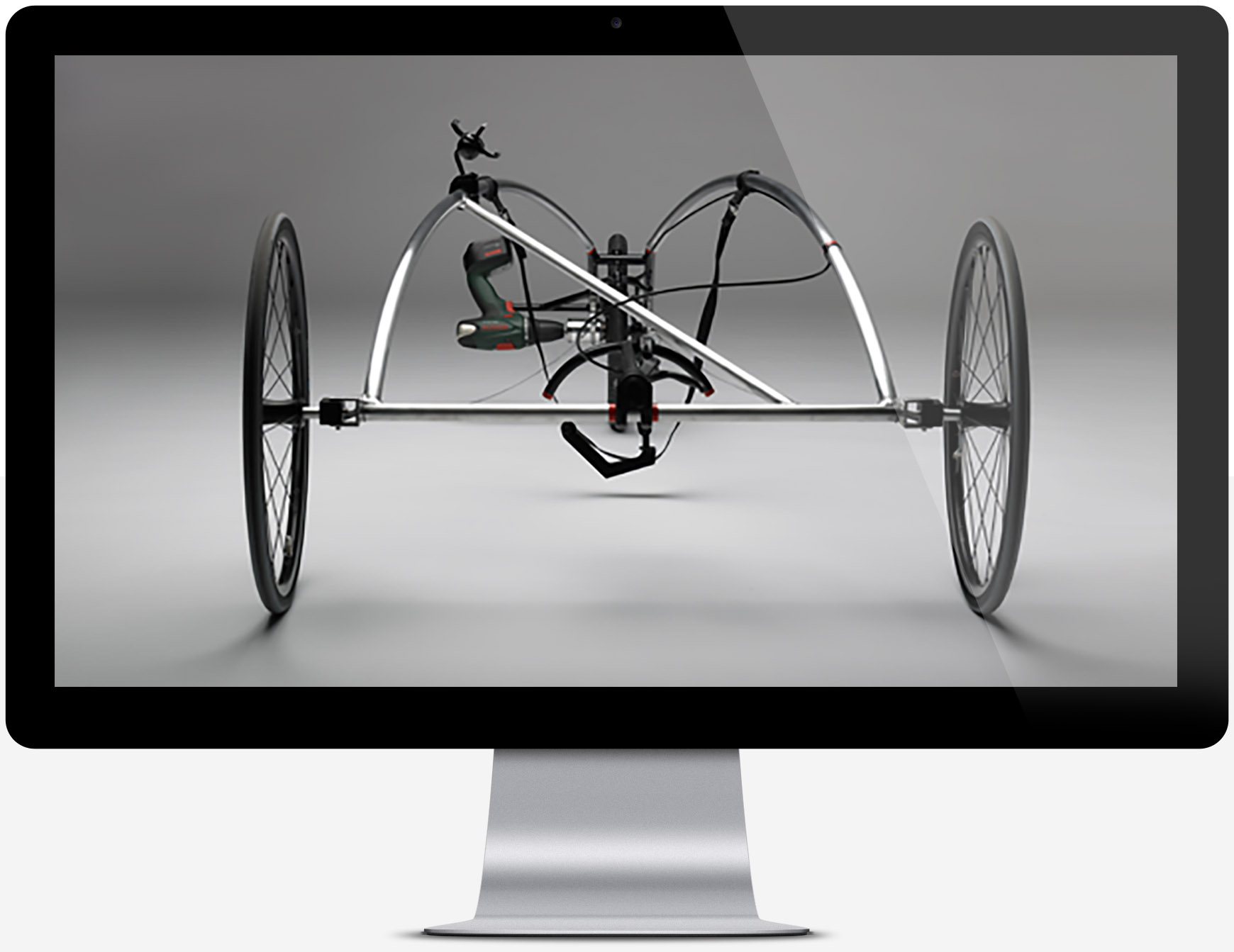

Hub drive on rear suspension minimizes friction loss and ensures an easy to regulate acceleration behavior while the lightweight front wheels originate from a sports chair.
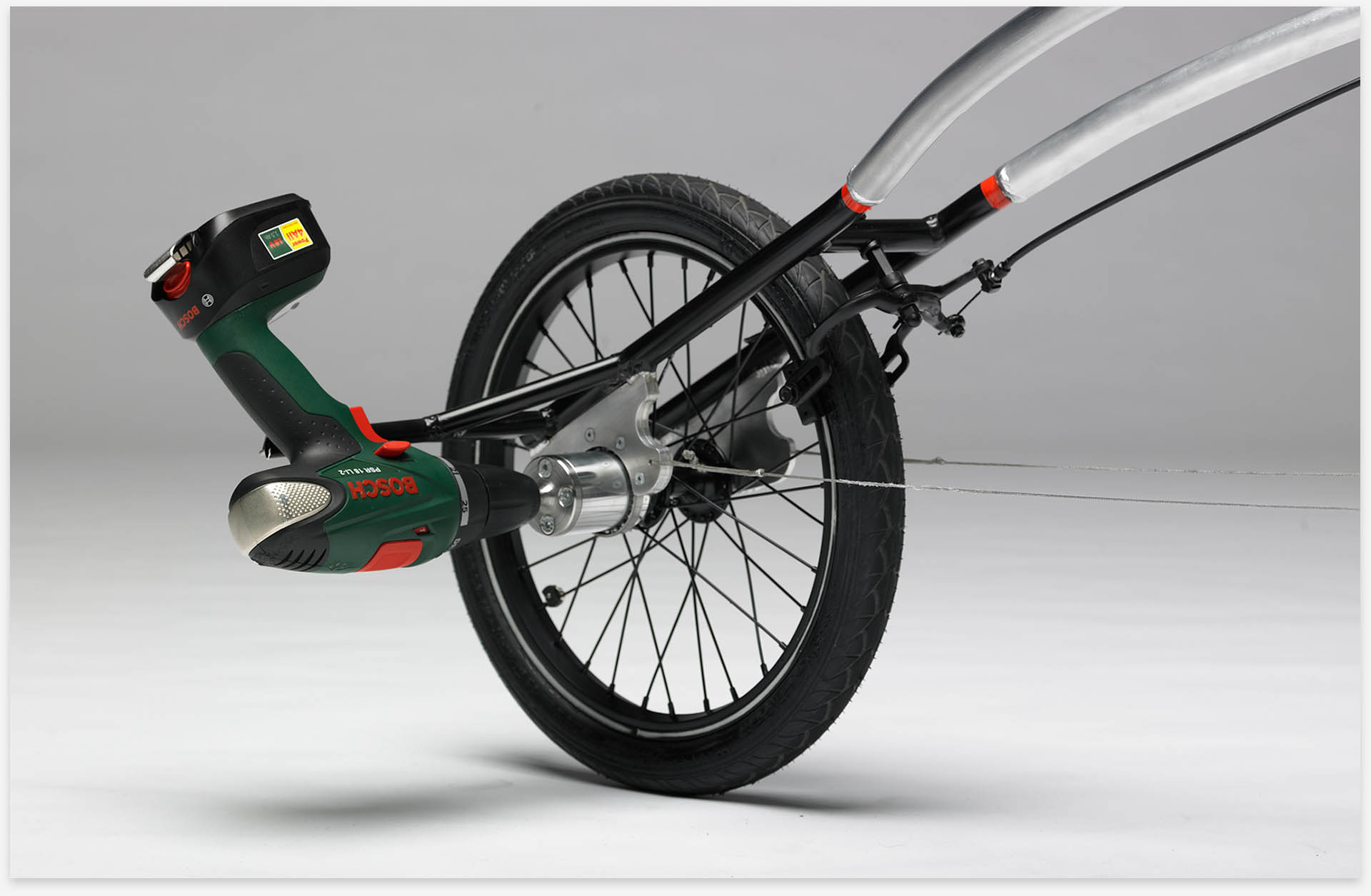

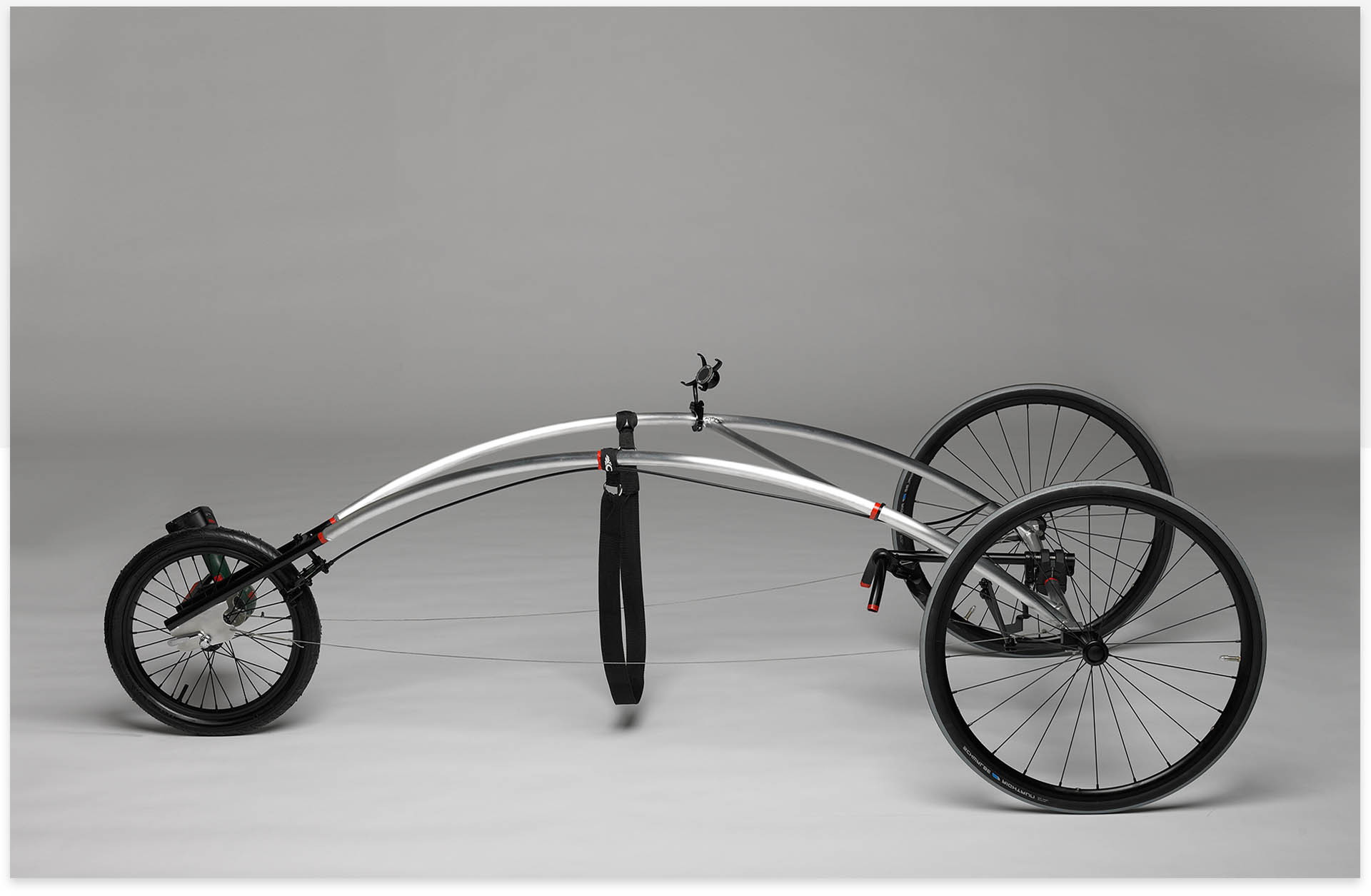

UTILIZATION
With our final vehicle concepts, we successfully participated in the contest, finishing third in the category "Lightweight Design".
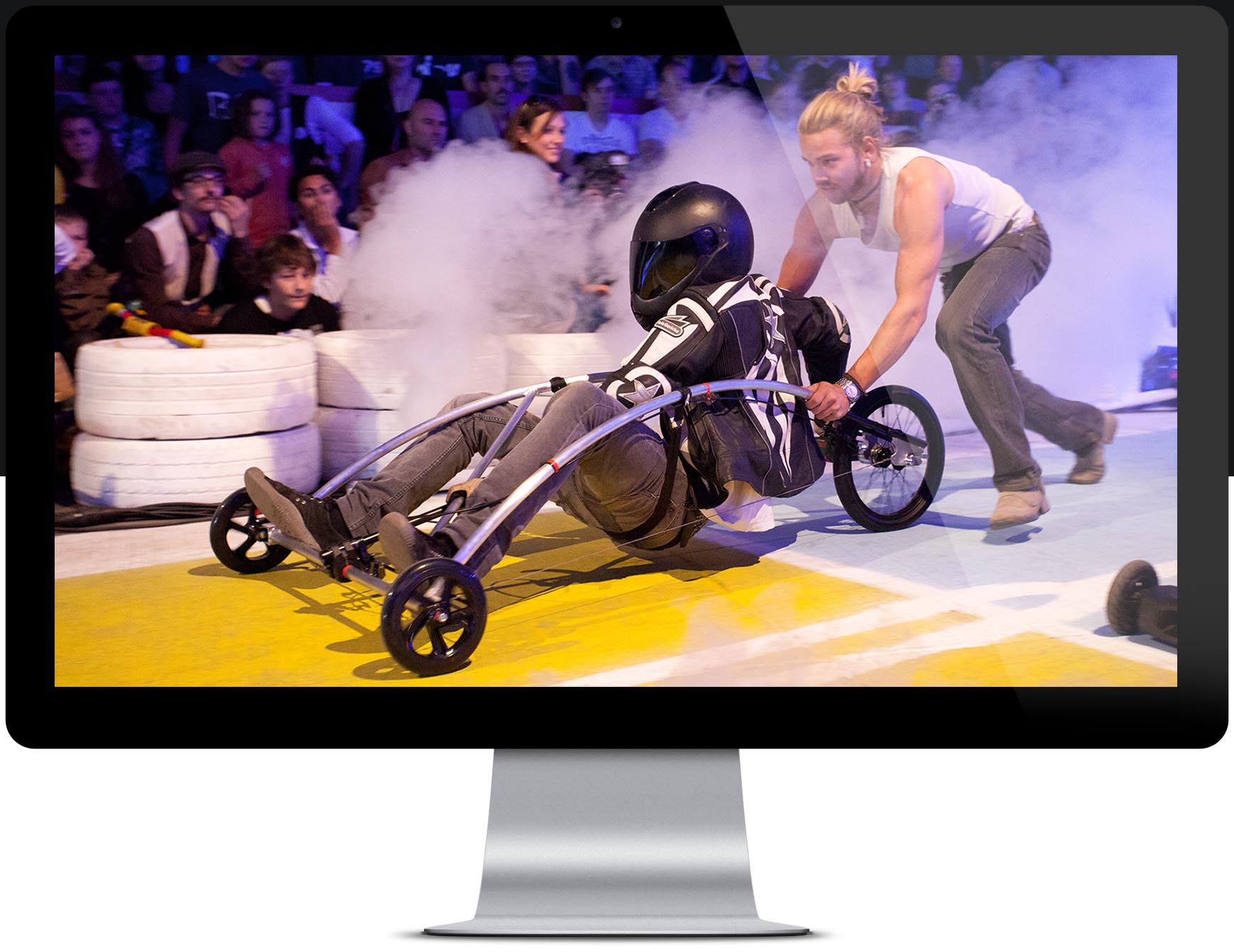

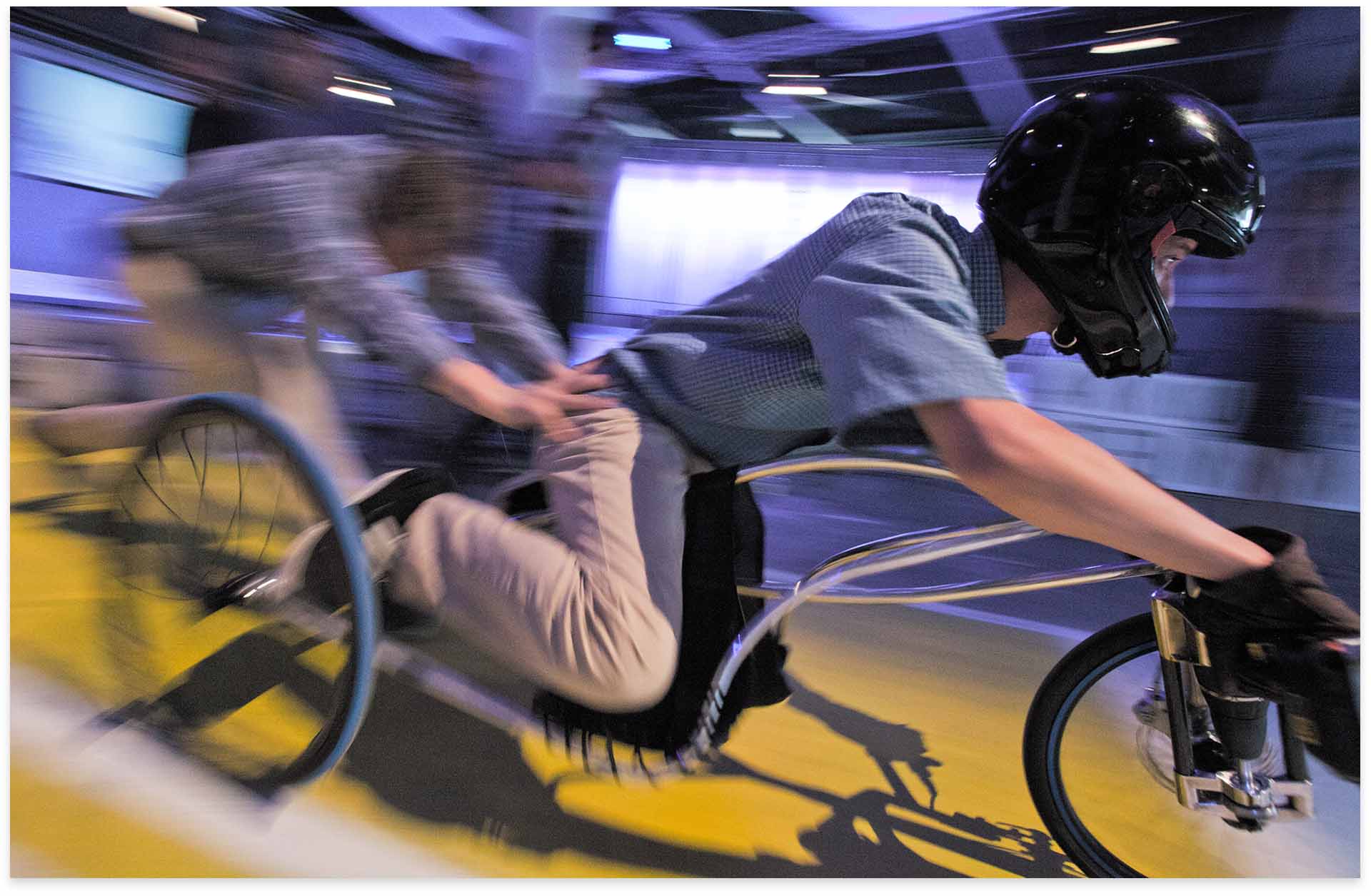

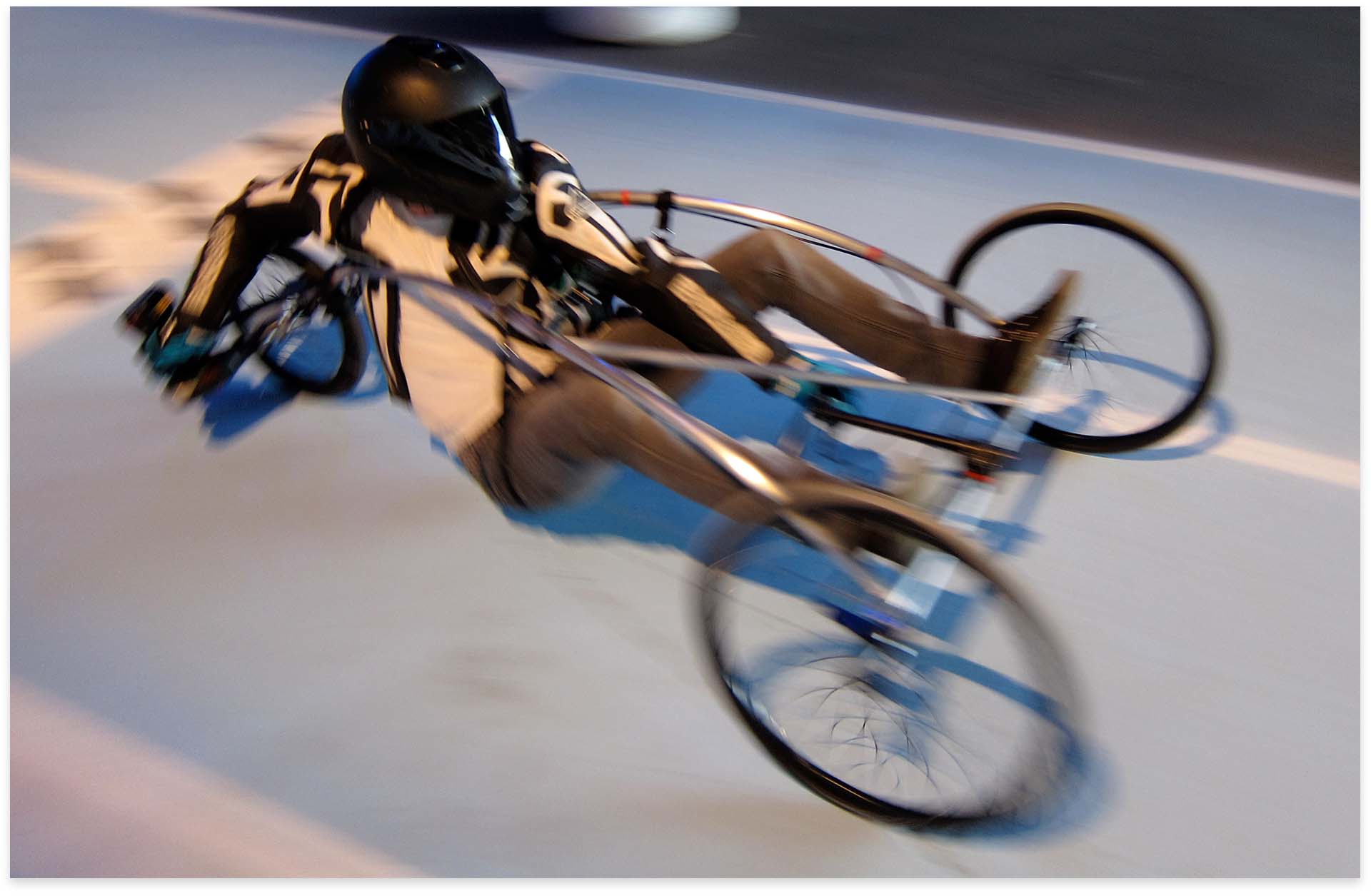

REFLECTION
Retrospectively, projects like these laid the foundation for my comprehension of design as an interdisciplinary study, which is why I decided to showcase it. After all, this was a student project from 2011. Still, co-creating a product in a by then unknown area of expertise helped cultivate my underatanding of "good" UX as a result of prior product thinking. Sounds too vague? It's not as complicated as it may seem:
by initially defining the problem our product solves (the development of an electric drill-powered propulsion that can move a vehicle), we were able to map out a strategy of how this could be achieved (by using a lightweight design frame with a bevel gear or hub drive). Having a clear notion of the so-called problem-solution-fit eventually allowed us to determine our goals and additional vehicle features.
Utilizing product thinking as part of our process let us comprehend the user experience of our vehicle concepts in its entirety and build appropriate solutions.

